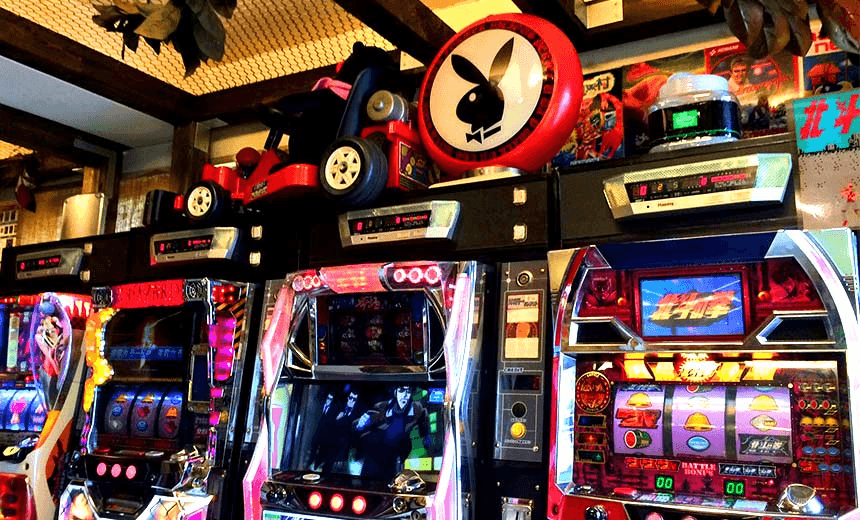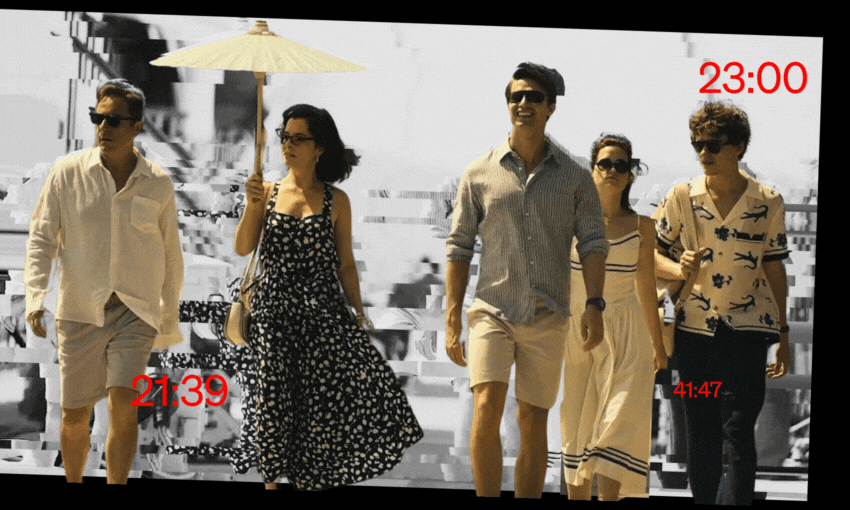He’s fresh from a shopping holiday in Japan and Dan Taipua has seen some awesome, awesome shit. In the 2nd and final part of this series he passes on all that he has learnt to any retro game tourists thinking of hitting the Japanese arcades.
While walking through central Osaka I was stopped in the street by a Japanese TV crew looking for tourists to interview and follow around for for a day of sightseeing. When the host asked what I’d most like to do in Osaka I said, “Challenge your best Street Fighter II player.” With an expression that mixed curiosity, polite dismissal and mild concern he asked, “How about something else?”
Gaming tourism is growing in Japan, but it has a few hurdles of respectability to clear before I’m allowed on the telly to get wasted by a spacies man. On a personal level I’ve never felt that video games were anything except an expression of culture like literature, film, photography or bonsai gardening. People wouldn’t raise an eyebrow if you said you were touring bookstores, cinemas and sports stadium – and the arcades of Japan are all of those in one place for game tourists.No one can see the world in a grain of sand, but we can try to catch a glimpse of the city in a circuit board.
In a bid for respectability, The Spinoff presents this beginners guide to arcade culture in Japan.
A cultural history of Japanese arcades
After World War II, Japan went through a period of massive and rapid industrialization of its manufacturing sector. Cities that were already well-populated were multiplied and drawn into dense circuits, while technologies expanded and proliferated throughout consumer markets. The arcade was born out four major factors in this mix: A market for urban leisure activities, the availability of disposable income, a manufacturing industry so advanced it possessed excess innovation, and a cultural appreciation for novelty.
From about the early-1960s to present, the metropolitan centres of Japan have always hosted some form of electronic amusement or video games, almost completely unaffected by the decline of arcades in the Western world. Arcades suit city life as a kind of between-space: a crowded public place to be alone, somewhere to meet friends before heading to another place, somewhere to kill the 15 minutes before your train arrives. A sign of how strong arcade culture is in Japan is the way that venues have evolved to share common traits, with a few minor variations.
What to expect from a modern arcade
Unless you’re searching for a specialist or indie arcade, you can expect to see multi-storied game centres in just about every major city space or shopping district in your travels. These will usually be part of a large corporate franchise like Taito Station, Club Sega, Adores or Round One but don’t worry about the chain branding because each will carry games from a range of publishers like Capcom, Bandai Namco, Koei-Tecmo and Konami.
A general floor layout will look like this, with a little variation depending on the size of the building:
- First floor: Prize games, crane games, and UFO catchers for stuffed toys, candy etc.
- Second Floor: Medal games, casino like machines played for tokens including horse racing simulators
- Third floor: Video games, fighting games and occasional puzzle and card games
- Fourth floor: Large simulator games, racing, robot battle pods, music and rhythm games
- Fifth floor: ‘Purikura’, photobooths with printable stickers etc.
Despite visiting a bunch of modern arcades, I never got into swing of the video games there because it was all TOO HARD OUT. About three-seconds in the fighting section had me bury my pride when I realised I had no idea what the hell was going on. In the photos above, you’ll see special eight page booklets that explain the most basic controls for the latest arcade releases: you have to read a book before you can even start to begin to know how to play. I wish I had more photos of the games to show you, but I left in shame each visit and spent time with the older crowds and couples in the medal games section.
Gambling simulators
Japanese medal games exist for a simple reason: gambling is mostly illegal in Japan, and gambling-style activities are heavily regulated by law. ‘Pachinko’ parlours have operated for decades in a tightly-bound grey area but still dominate the market for amusement/leisure spending throughout the nation. However, while that market is healthy it is also over-saturated. In response to these conditions, medal games operate as a kind of gambling simulator – using non-exchangeable tokens for play and pumping-up the gameplay aspect.
Much like casinos, you’ll find an older crowd whiling away hours on medal game floors, passing time and sharing a kind of together-alone social experience. Middle-aged men in particular enjoy less-gamey fair like horse-betting simulators with standalone stations pointed at a screen with fake CGI horses galloping down a track. Older women and younger couples are drawn to pusher games (like a coin cascade, or ‘coin pusher’) that offer an experience like a turbo-powered, nitro-actuated slot machine.
The idea of gambling simulators might seem silly – why wager without a payout? The response is uniquely Japanese in sobriety: why not have fun without the massive financial loss you’re bound to incur, at better odds than a real casino where no one really ever wins? The technology in medal games is a sensory marvel in itself, and you can see a jackpot being hit with beaming lights, blaring music, robotical arms, pulsing jets of real water and on-screen animation in this Venus Jackpot video.
Living museums: Retro arcades of Tokyo and Osaka
With such a rich social and technological background, it’s little wonder that Japanese arcade culture would attempt to preserve some of its own history. Rather than walling off this history in museum exhibitions or digital archives, the retro arcades of Tokyo and Osaka recreate a wholly-formed nostalgic experience – with era-themed game centres that let visitors enjoy games the way they should be. While there are dozens of retro-themed arcades found across the country, the ones listed here offer very unique experiences.
A more typical retro arcade can be found at Super Potato (pictured above), one of the retro console stores in Part One of this series. Super Potato is an arcade for gamer’s gamers, focussed on classic video game titles rather than an all-round retro experience. Here the owners have curated a collection of landmark games spanning sitdown Astro City cabinets with DoDonPachi, Metal Slug, Street Fighter II Hyper Fighting and a selection of licensed character ‘Pachinslot’ gambling simulators with Fist of the North Star, Lupin The Third and Resident Evil. In a country that doesn’t do things by halves though, the Super Potato arcade also features a vintage ‘dagashi’ and ‘okashi’ candy store and serves glass bottled sodas to enjoy while smoking (don’t smoke, I re-quit once I got back to NZ).
1-Chome Playland, Decks Tokyo Beach Shopping Centre (Tokyo)
https://goo.gl/maps/1kXQeedi9fz
A fully-rounded retro arcade experience can be found on the artificial island of Odaiba located in Tokyo Bay, a huge land-mass made specifically for vacationing and shopping with massive malls and amusement parks. Odaiba is also the real-life home of Pallet Town, from Pokemon fame.
Decks Tokyo is a shopping mall close to the main station and houses the ‘Daiba Itchome Shoutengai’, a shopping street entirely themed for mid-to-late Showa-period Japan (1960s-1980s) that drips with rose-tinted nostalgia. In this section of a shopping mall the ‘Economic Miracle’ of post-war Japan is an attraction in itself, carrying vintage and reproduction consumer goods, toys, amusements and street food stalls from the past.
At the entrance of the Shoutengai you’ll find Playland, a retro-only arcade jammed full of vintage machines the likes of which are unseen outside its walls. You’ll find not only retro video game cabinets but also pre-digital arcade games that rely entirely on moving mechanical parts, like a driving game where a model car is navigated through obstacles on a moving vinyl belt. The games here are all made for kids: but when we visited it seemed to be more popular with parents and young hipsters pulled in by the hyper-coloured nostalgia. The arcade itself is beautifully decorated with records, magazine covers, comic books, posters of 80s pop idols and vintage advertising, along with the cartoon decorated machines themselves. I’m a horrible photographer, but you can see a great gallery here.
Playland is so overwhelmingly bright and optimistic in its preservation of the past that the object it tries to obscure emerge in sharp relief: The good times were very, very good but they’ve past. Japan is still a wealthy country with high standard of living, but in 1989 and 1998 it suffered two major economic recessions and has spent an entire generation dealing with the same kind of cultural effects that the West has experienced since 2008 market crash. A nostalgia for the better times makes sense at a holiday spot- but it’s a heavy thing to reflect on when you’re a 6’2″ adult man crouching down trying to control a candy-grabbing robot cat.
Silver Ball Planet, Big Step Mall (Osaka)
https://goo.gl/maps/AfzGyjYhJTk
This place was a total surprise, discovered by accident. Travelling to ‘Ame-mura’ (America Town) in Osaka to buy expensive skateboard brands and even more-expensive funk records, I stumbled into the top floor of a shopping mall that houses some of the most elusive and best-regarded American pinball machines ever made. Silver Ball Planet was completely different from the other arcades on this trip: spacious and calm it had the feeling of a gallery, despite being well-attended.
Japanese manufacturers never really took to pinball, in part because of the amount of space each table needs, and because of the existing popularity of Pachinko gaming. If the country lacked in specialist technicians at all, that wasn’t apparent at Silver Ball – every machine here had been fully restored and perfectly maintained, carrying titles from about the late-1960s (‘Baseball’) through to the present (‘Marvel’s Avengers’). Highlights include top-selling pinball title of all time ‘The Addams Family’, the first pinball with a combined vertical playing field ‘Banzai Run’, and a mid-90s production of ‘The Who’s Tommy’ for the sake of being meta.
Silver Ball speaks to the dedication with which Japan preserves its arcade history. Even though these pinball machines weren’t manufactured domestically, there’s still a crew of skilled technicians able and willing to maintain them for an equally dedicated population of visitors and gamers. You’ll pay anywhere from ¥100 all the way down to ¥10 per game, so I’m not even sure that Silver Ball Planet manages to turn a profit. Maybe it really is some kind of art gallery, in a country that reveres its pastimes and takes leisure seriously. I hope the photos I took do justice to these pop culture objets d’art, because it was a real joy to spend some time around them.
The magic of Japan’s video game arcades was brought to with the help of Bigpipe



